Test Resources

TOEFL® Resources by Michael Goodine
How to write a fantastic toefl integrated essay (2023).
Here’s how the TOEFL Integrated Essay works:
- It is the first writing task on the TOEFL test.
- First, you will have three minutes to read an article (four paragraphs, 250 to 300 words) about an academic topic.
- Next, you will listen to a lecture (about 2 minutes) about the same topic.
- Finally, you will have 20 minutes to write an essay about the relationship between the two sources. I recommend that you write about 280 words.
- You can see the article while writing your essay, but you cannot hear the lecture again.
Essay Evaluation Service
Do you want some personal help with the essay? You can sign up for my essay evaluation service and boost your score!
The Relationship
The relationship between the article and the lecture will be one of the following.
Argument Style (Frequent)
The reading presents an argument and the lecture presents a counter-argument.
Problems and Solutions Style (less common)
The reading presents a problem and the lecture presents solutions to the problem.
Solutions and Problems Style (less common)
The reading presents solutions to a problem and the lecture challenges the solutions.
The Article
The article begins with an introduction which mentions the topic and the author’s main idea. Next are three body paragraphs. Each body paragraph contains one supporting argument (opposition style), one problem (problems and solutions style), or one solution (solutions and problems style).
Here’s an example:
The idea of colonizing asteroids has long been a topic of fascination and speculation in science fiction and popular culture. In recent years, however, the idea of asteroid colonization has become more realistic and feasible, thanks to advances in technology and space exploration. There are many potential benefits to colonizing asteroids, and these benefits make the pursuit of asteroid colonization a worthwhile endeavor. One of the most obvious benefits of asteroid colonization is the scientific potential. Asteroids provide a unique environment for scientific research due to their small size, low gravity, and lack of atmosphere. Research conducted in these environments could provide valuable insights related to many different academic fields. Not only that, but asteroids could also serve as stepping stones for future missions to other destinations in the solar system, such as Mars or the moons of Jupiter and Saturn. Another benefit of asteroid colonization is the potential for economic growth and development. Natural resources mined on asteroids could create new industries and job opportunities, which would generate significant revenue for both governments and private companies. Asteroid mining could also reduce the need for resource extraction on Earth, which could help to preserve our planet’s natural environment. In addition to economic benefits, asteroid colonization could also have important implications for the long-term survival of humanity. Asteroids could serve as potential refuge for humans in the event of a large-scale disaster on Earth, such as an asteroid impact or a nuclear war. Even if such a disaster doesn’t occur, asteroids could provide valuable information regarding the origins and evolution of the solar system, and how life emerged here in the first place.
You have three minutes to read it and take notes. Then you hear the lecture. You will be able to see the article again when the lecture is finished.
The Lecture
The lecture is on the same topic, and it is about two minutes long. You can only hear it once, so take notes.
At the beginning of the lecture, you will hear the lecturer’s main idea. The rest of the lecture consists of three opposing arguments, three solutions, or three problems. These directly respond to the three arguments/problems/solutions mentioned in the reading. Not only that, but they are in the same order as the reading.
Here’s a transcript of that:
While some people argue that starting colonies on asteroids could have many benefits, this claim is not necessarily supported by evidence. In fact, there are several reasons why starting colonies on asteroids may not provide the advantages that are often claimed. One reason why asteroid colonization may not provide significant scientific benefits is our lack of knowledge about asteroids. Despite decades of space exploration and study, our knowledge of asteroids is still limited. We do not know how many asteroids exist, what resources they contain, or what conditions are like on their surfaces. Until we have a better understanding of asteroids, it is difficult to predict what scientific benefits colonization might provide. Next, we can’t exactly predict the economic benefits of settling on asteroids. While asteroids are known to contain valuable resources, such as metals and minerals, it’s not clear how much of these resources exist on asteroids, or how much they would be worth when transported back to Earth. We don’t know whether mining for resources in space would be more cost-effective or efficient than simply getting them through conventional methods here on earth. Finally, asteroids are just not suitable for long-term human settlement right now. Most asteroids are small and do not have enough mass to generate significant gravitational pull. This means that any human settlements on asteroids would need to be designed to cope with the challenges of low gravity, such as serious difficulty moving around and possible damage to our bones and muscles. These challenges could make living on asteroids extremely uncomfortable and dangerous.
The Question
After the lecture finishes, the question will be shown. It will look something like this:
- Summarize the points made in the lecture, being sure to explain how they oppose specific points made in the reading passage.
- Summarize the points made in the lecture, being sure to explain how they answer the specific problems presented in the reading passage.
- Summarize the points made in the lecture, being sure to explain how they cast doubt on specific solutions presented in the reading passage.
After you see the question, you will have 20 minutes to plan, write and revise your essay. Have fun!
Taking Notes
If you understand how the sources are structured, note-taking should be easy. You can do something like this:
Here are my notes from the above samples (colonizing asteroids):
Note-Taking Tips
- Prepare your paper before the question beings by writing “reading” and “listening” and drawing arrows.
- Even though you will see the article as you write, it is a good idea to take notes. That will force you to pay attention during the three minutes you have to read it.
- Use short forms like “grav” and “cond” and “effec” to save time.
- Use “x” to refer to negatives (not, no, can’t, etc).
- Immediately after the lecture finishes expand your notes with details still fresh in your head. I used blue ink to show what I did.
- You will use a pencil on test day. Not a pen. Practice with a pencil.
Writing Your Essay with Templates
Your TOEFL integrated essay should include an introduction and three body paragraphs . You don’t need to write a conclusion.
The following templates suggest a way to structure your paragraphs. I don’t really think you should use the templates below word for word. Instead, use something similar to this and personalize it as you like.
The Introduction
No matter what question style is used, you can write an introduction that looks something like this.
- The reading and the lecture are both about _____.
- While the author of the article argues that _____, the lecturer disputes the claims presented in the article.
- His position is that _____.
The Body Paragraphs
You can use something like the following templates for the body paragraphs:
- According to the reading _____.
- The article mentions that ____.
- This argument is challenged by the lecturer.
- He claims that ____.
- Additionally, he points out that ______.
- Secondly, the author suggests ______.
- In the article notes that _____.
- The lecturer, however, asserts that ______.
- He goes on to say that ______.
- Finally, the author puts forth the idea that _____.
- The author contends that ____.
- In contrast, the lecturer’s stance is _____.
- He says that _____.
You don’t need to write a conclusion.
Sample Essay
Using the above notes and suggested templates I created this essay. Notice how I gently modified the template. I didn’t use it word for word. Feel free to follow it 100% or to personalize it to suit your preferences!
The reading and the lecture are about the possibility of starting colonies on asteroids. While the author feels that this is a good idea due to scientific benefits, economic benefits and the long-term survival of humans, the lecturer does not believe that the author’s claims are correct. His position is that it might not be a good idea to colonize asteroids. First of all, the author argues that asteroids are a great environment for scientific research because they are small, with low gravity and no atmosphere. Moreover, the article notes that they could be a way to start missions to more distant locations in the solar system. This argument is challenged by the lecturer. He says that we just don’t know enough about asteroids to be sure of their scientific value. We don’t know how many exist, or about conditions on their surfaces so it is difficult to really predict the scientific benefits of colonizing them. Second, according to the article, there could be great economic benefits of colonizing asteroids because they contain natural resources. Mining the resources could be very profitable, and reduce the need to mine them on Earth. In contrast, the lecturer notes that we don’t know exactly how many resources asteroids contain, nor how much they would be worth back on Earth. As a result, it isn’t clear if mining in space is more cost-effective than doing so on Earth. Finally, the author claims that colonies on asteroids could ensure the long-term survival of humanity. To be more specific, we could survive on them if a war or disaster affects the Earth. In contrast, the lecturer’s stance is that human settlements would have to be designed to deal with the unique challenges of the gravity found on asteroids. These challenges could make living on them extremely uncomfortable and dangerous in the long run.
- The lecture summary is the most important part of the essay. Shorten the reading summary if you need to save time.
- I recommend between 280 and 300 words.
- Use transitional phrases like “in contrast” and “moreover” and “finally” just like I did.
- Always be sure to indicate where the details are from (the reading or the lecture).
- Avoid copying from the reading word for word. Paraphrase as much as you can.
- You don’t need fancy grammatical structures. The accuracy of your details is more important in this task.
- Save about one minute to proofread your work.
- I maintain a collection of complete sample essays written using the above technique. Read them!
How about the Independent Essay?
If you haven’t seen it already, you might want to read my article about the independent writing task .
Sign up for express essay evaluation today!
Submit your practice TOEFL essays for evaluation by the author of this website. Get feedback on grammar, structure, vocabulary and more. Learn how to score better on the TOEFL. Feedback in 48 hours.
Sign Up Today
Enjoy this post? Rate it!

TOEFL integrated writing task 2023 | Examples and sample essay.
Want to excel in the toefl writing task elevate your skills with the most up-to-date examples, carefully crafted sample essays, and insights in 2023. maximize your potential to succeed in the integrated writing task., table of contents, introduction, toefl integrated writing task structure and format , toefl writing task topics , toefl writing task sample , toefl writing task pdf and other resources , strategies for toefl integrated writing task , scoring criteria for toefl writing task , key tips for success , example 1: environmental conservation , example 2: technological advancements in medicine , introduction: , body: , key takeaways .
TOEFL (Test of English as a Foreign Language) is a critical stepping stone for students who aspire to study in English-speaking universities. The TOEFL writing task is one part of this examination that can often become a cause for concern. It not only tests your ability to understand English but also your ability to express thoughts, ideas, and opinions in a clear and precise manner.
In this comprehensive guide, we will explore various aspects of the TOEFL writing task, including topics, samples, format, and specific answers to common questions. The information provided is tailored to the 2023 edition of the test, ensuring relevance and applicability to your preparation. So, if you’re planning to take on this challenge in 2023, let’s begin by understanding the structure and requirements of the TOEFL writing task.
The TOEFL integrated writing task is the first of the two writing tasks in the TOEFL exam. It’s designed to assess your ability to combine listening and reading skills to write a coherent and well-structured essay. Here’s a detailed breakdown:
- Reading passage : A passage around 200-250 words long is provided. You’ll have three minutes to read it.
- Listening clip : A short lecture related to the reading passage is played. You’ll be given time to take notes to remember the content better.
- Writing task : You will have 20 minutes to write a response of about 150-225 words, summarizing the points made in the lecture and explaining how they relate to specific points in the reading passage.
The topics for the TOEFL integrated writing task are generally academic and range from subjects like history, science, art, and social sciences. Here’s an example of how the topics will be given:
- Reading passage : An excerpt will be provided about Renaissance art and its influence.
- Listening clip : A lecture discussing a specific Renaissance painting.
- Writing task : Compare and contrast the information in the reading passage and the lecture.
Practicing in advance by working on such topics will help you write and format your writing tasks better. Here’s a sample for you to practice:

- Reading passage: Brief description of climate change and its effects.
- Listening clip : A lecture discussing various solutions to combat climate change.
- Writing task : Summarize the solutions from the lecture and relate them to the problems mentioned in the reading passage.
To support your preparation, TOEFL writing task PDF materials, containing practice questions and samples are available online. These resources often include:
- Guides on TOEFL writing format
- Collection of TOEFL writing samples with answers PDF
- TOEFL writing task 1 sample answers and TOEFL writing task 2 sample answers
- Practice tests for TOEFL writing task 2
These materials are instrumental in understanding the pattern and honing your skills to succeed in the TOEFL writing task.
- Understanding the structure : Familiarize yourself with the TOEFL writing format, including reading, listening, and writing phases.
- Time management: Allocate time for reading, note-taking, and writing, keeping in mind the 20-minute time limit for the writing task.
- Note-taking skills : Practice jotting down crucial points from both the reading passage and the listening clip. Focus on the main ideas, supporting details, and the relationship between the reading and listening parts.
- Creating an outline : Before diving into writing, create a rough outline to organize your thoughts. This helps in maintaining coherence and connection between various sections of the essay.
- Practicing with samples : Utilize the TOEFL writing task sample, TOEFL writing task 1 sample answers, and TOEFL writing task 2 sample answers for regular practice.
Understanding the scoring can guide you in preparing effectively. The TOEFL integrated writing task is scored on a scale of 0-5 based on the following criteria:
- Content : Accuracy, completeness, and connection between reading and listening.
- Organization : Logical progression, clear introduction, body, and conclusion.
- Language use : Grammar, vocabulary, sentence structure, and overall fluency.
- Use transitional phrases : Transitional words like “however,” “in addition,” and “therefore” can help in maintaining the flow.
- Avoid repetition : While using keywords is vital, avoid unnecessary repetition. Make sure your content is varied and engaging.
- Proofread : Reserve some time at the end for revising and correcting errors.
- Access Quality Resources : Consider TOEFL writing samples with answers PDF, TOEFL writing task PDF guides, and practice tests for well-rounded preparation.
- Tables, quizzes, and other interactive elements: Incorporating tables and quizzes can be an excellent way to enhance the learning experience. For instance, a table comparing different TOEFL writing task topics or a quiz testing understanding of TOEFL writing format can be included in online learning platforms or books.

Examples of TOEFL integrated writing task
The TOEFL integrated writing task presents a unique challenge to assess your ability to analyze information from both a reading passage and a lecture. In this task, you must demonstrate your comprehension of the material and your capacity to connect ideas between the text and the spoken content. To give you a clearer picture, let’s dive into a few illustrative examples of TOEFL-integrated writing tasks:
Reading passage : Description of deforestation and its impact on biodiversity.
Listening Clip : A lecture discussing various conservation methods employed globally.
Writing task:
- Reading: The passage highlights the critical loss of forests, leading to a decline in biodiversity and environmental balance.
- Listening: The speaker introduces multiple conservation techniques such as reforestation, wildlife corridors, and legal enforcement.
- Essay: The essay must summarise the conservation methods mentioned in the lecture and relate them to the problems of deforestation and biodiversity loss detailed in the reading passage.
Reading passage: An overview of the traditional medical practices and their limitations.
Listening clip: A lecture elaborating on recent technological advancements in medical diagnostics and treatments.
Writing task :
- Reading: The passage outlines traditional medical practices, emphasizing their limitations in accuracy and efficiency.
- Listening : The lecturer elaborates on cutting-edge technologies like AI-powered diagnostics, robotic surgeries, and personalized medicine.
- Essay : The essay should connect the advancements discussed in the lecture with the limitations outlined in the reading passage, showcasing how technology is revolutionizing medical practice.
In-depth Analysis of a Sample Essay | Environmental conservation
The essay must have a good flow and cohesiveness. This makes it easier to understand and leave a good impression. Here is the in-depth analysis of an essay on environmental conservation.
“The loss of forests and biodiversity has long been a global concern. However, modern conservation methods, as described in the lecture, offer promising solutions to the challenges outlined in the reading passage.”
- Paragraph 1: Discuss reforestation, its importance, and how it directly addresses deforestation.
- Paragraph 2: Explore wildlife corridors and their role in preserving biodiversity.
- Paragraph 3 : Explain legal enforcement, international agreements, and their impact on conservation efforts.
- The TOEFL-integrated writing task involves reading, listening, and writing. Understand the flow and practice each part.
- Make use of TOEFL writing samples with answers PDF, TOEFL writing task PDF guides, and various other materials for practice.
- Your essay should logically connect the reading and listening parts, maintaining a clear and concise structure.
The innovative conservation techniques described in the lecture provide a comprehensive approach to combating the grave issues of deforestation and biodiversity loss mentioned in the reading passage. These methods signify hope and progress in environmental preservation.
We hope you found this article insightful. If you have any more queries please reach out to us and get them solved quickly!
Liked this blog? Read: TOEFL requirements 2023 | Documents and minimum requirements guide.
1. How much time do I have for the TOEFL Integrated Writing Task?
Ans. You have 3 minutes to read the passage, a listening time for the clip, and 20 minutes to write the essay.
2. Can I take notes during the listening part of the TOEFL Writing Task?
Ans. Yes, taking notes is allowed and advisable during the listening portion.
3. What types of topics are covered in the TOEFL Writing Task Topics?
Ans. Topics are typically academic, ranging from history, science, art to social sciences.
4. Where can I find TOEFL Writing Task 1 sample answers and TOEFL Writing Task 2 sample answers?
Ans. Various online platforms, prep books, and official TOEFL guides provide these samples.
How useful was this post?
Click on a star to rate it!
Average rating 3.3 / 5. Vote count: 3
No votes so far! Be the first to rate this post.
People also liked

IELTS success| Tips to master each section
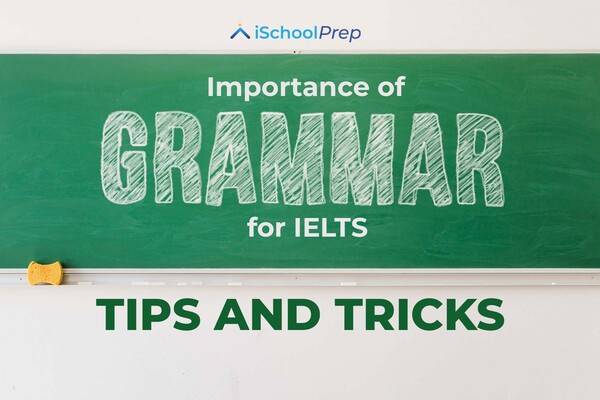
Importance of IELTS grammar | Tips and tricks

TOEFL and IELTS | Role of contextual & academic words
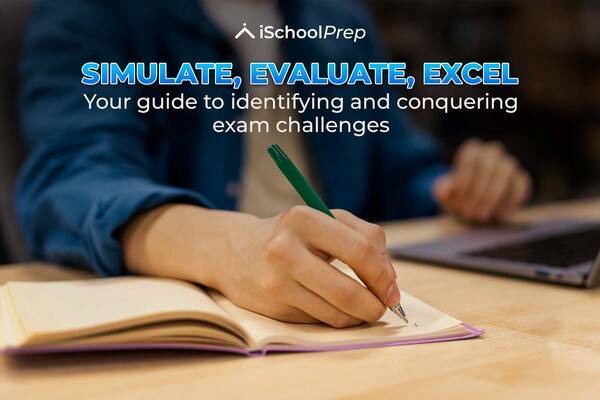
Simulated tests | Opportunity to overcome challenges
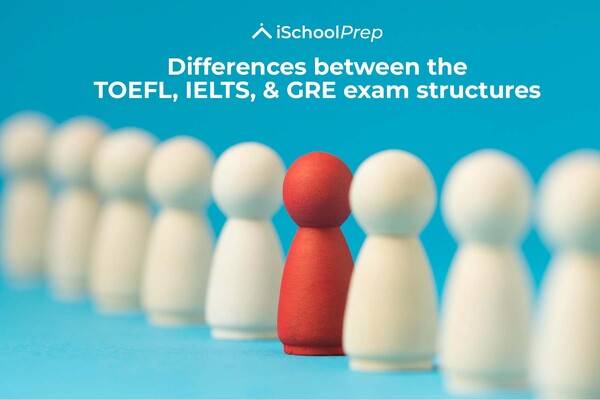
TOEFL, IELTS, & GRE exam structure | Key differences 2024!

Ace the GMAT exam | Navigate quant & verbal difficulties!
Leave a reply cancel reply.
Your email address will not be published. Required fields are marked *
Please enter an answer in digits: 19 − 18 =
Start your journey with iSchoolPrep
Need help with your Test Preparations? Contact Us for more details
Inquire Now
Get e-books, expert guidance, live classes and more....
- Phone: +91 8466016171
- Whatsapp: +91 8208375580
- Email: contact@leapscholar.com
TOEFL Integrated Writing Task 2023: Examples & Sample Essays
- Updated On January 17, 2024
- Published In TOEFL 📚
The Test of English as a Foreign Language or TOEFL is an esteemed English proficiency exam divided into four sections. Under TOEFL writing, candidates must show how skilled they are in reading, writing, and listening to the language.
Table of Contents
There are two tasks that candidates need to face when writing this section. Task 1 is TOEFL Integrated Writing Task, and Task 2 is TOEFL Independent Writing Task. Combinedly, it is an exam of 50 minutes, but here individuals will find detailed information on Task 1 and its sample question.

What is TOEFL Writing Task 1? – TOEFL Integrated Writing Task
Integrated Writing TOEFL expects its candidates to use their reading, listening and writing skills to complete this task. In this, these candidates get three minutes to prepare for an essay by reading a short passage and listening to an audio clip relating to a single topic.
After preparing, they have 20 minutes to provide an essay providing their response to these two sources. There are two scenarios which applicants can encounter under this exam:
The best guidance for your STUDY ABROAD DREAM
Start your journey with the best study abroad experts in India

- Contradictory: An audio clip that contradicts what is mentioned in the passage.
- Supportive: An audio clip that supports what the passage says.
However, no matter the nature of these cases, applicants need to summarize their topic in 150 to 225 words. Also, they must establish a connection between the passage and the audio clip.
TOEFL Writing Integrated Task Exercises
Students aspiring to study abroad must take the initiative to sharpen their skills by practising sample papers. For this purpose, candidates can refer to the below questions on integrated task writing TOEFL .
Question 1: Summarise the essential points mentioned in this passage and give inputs according to what is mentioned in the lecture.
Sample Reading Passage:
The water on the west coast of North America used to contain several Sea Otters (small mammals), starting from California to Alaska. However, in these few years, the population of Sea Otters on this Alaskan coast has rapidly declined. Moreover, this has started directly affecting its coastal ecosystem because of its important role in maintaining a balance. With several concerns rising now, many investigators have started investigating this matter. They found it was mainly because of two reasons. One is due to attacks by predators, and the second is environmental pollution.
Environment pollution formed one of the reasons because of the fact that there is a pollution source on the Alaskan coast, i.e., oil rigs. Also, investigators took water samples to test the chemical content in it. The result was high enough to affect the immune system of water creatures, which may result in death.
Another piece of evidence pointing out water pollution as its main culprit was a similar case of decline in other sea mammals, like the seal. This proved that whatever was causing the death of Sea Otters was also taking the lives of other sea mammals. Two things can affect an entire species. It can either be water pollution or a large water predator like orcas.
Finally, researchers also blamed the pollution hypothesis for explaining the uneven decline of Sea Otter. In other words, due to ocean currents and other natural factors, the pollution may have concentrated unevenly along the coast resulting in the death of mammals in that part.
Question 2: Summarise the belief of the lecturer and how they relate to this reading passage given below.
The International Astronomical Union Conference declared the inexistence of Pluto planet on 24th August 2006. It was initially discovered by scientists in 1930. It is when they were searching for the cause of what was interfering with the orbit of Uranus planet. At first, researchers believed Pluto was of the same size as the earth but later found it was even smaller than our earth’s moon and other moons as well.
Now there are thousands of planetary objects found in space similar to Pluto, like Eris, which is even a bit larger than Pluto. So, choosing to reclassify Pluto as one of the dwarf planets acknowledges that science is making progress. While it is disheartening news for Pluto planet lovers, people at large have accepted its lost status. Moreover, when it comes to today’s generation of students, they will know that currently, there are only eight planets, and Pluto was never a part of them.
TOEFL Integrated Writing Template to Follow for Better Score
To complete this above exercise with sheer perfection, candidates should know about the recommended TOEFL integrated writing template . It is as follows:
Introduction Paragraph 1
Here, candidates must begin writing integrated task TOEFL with a sentence like:
The lecture and the reading passage both talk about (topic). The articles support the thought that (thought) and/but the lecturer feels that (sayings). The lecturer and the author agree/disagree on points 1/2/3, which I have discussed in detail in the following essay.
Body Paragraph 2 + 3 + 4
As per this reading passage (statement 1), the point of discussion of this article is that (discussion). This point is (challenged/affirmed) by the lecturer in the audio clip. He or She states that (statement).
Secondly, the author talks about (statement 2). The article says that (point of discussion). The lecturer agrees/claims that (audio content) in its response. He or She goes on to say that (discussion).
Finally, the author suggests that (statement 3). He or She means that (explanation). The lecturer agrees/disagrees with this point stating (statement). He or She notes that (explanation).
Candidates may or may not give a one-line conclusion at the end.
Tips for TOEFL Writing Tasks
The writing section of the TOEFL exam forms an integral part of the English language proficiency exam. To clear it, here are some crucial tips for candidates to consider. It can help them perform better in their TOEFL writing integrated task and secure a seat in a foreign university:
- Candidates must divide the time taken to complete a paragraph according to the total time given, i.e., 20 minutes.
- Also, if possible, students must keep their last 5 minutes for revision purposes and correcting grammatical errors.
- Applicants should practice a concise writing style from the beginning to make it a natural habit.
- While listening to the audio, individuals must always note important points, so the essay contains all necessary information.
- Individuals must use transitional words to create a better flow of their content.
- When candidates take notes of important points, they must write one or two words to remember. This saves time.

Individuals looking for TOEFL Integrated Writing task samples for practice can find some references above. Along with it, there is information about the time one gets to complete this task, how many words they have to produce within this period and the recommended template to follow. Also, one can refer to these above tips while writing to make sure they score the highest marks possible.
[faq-schema id=”8372″]
Saket Kohli
An International Higher Ed professional with 7+ years of experience studying, working, and living across three geographies, currently on a mission to share his journey as an International Student.
Related Posts

Is TOEFL Exam Hard: Know The Best Tips to Crack TOEFL In 2024
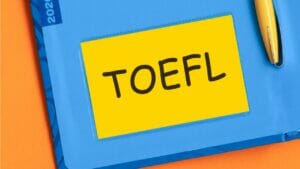
TOEFL Exam Eligibility 2023: Know Certain Criteria & Age Limit

TOEFL Accepting Universities in USA: Universities, Score, Visa
Trending now.

This is TestGlider blog discussing TOEFL and IELTS.
How to Write a TOEFL Integrated Essay
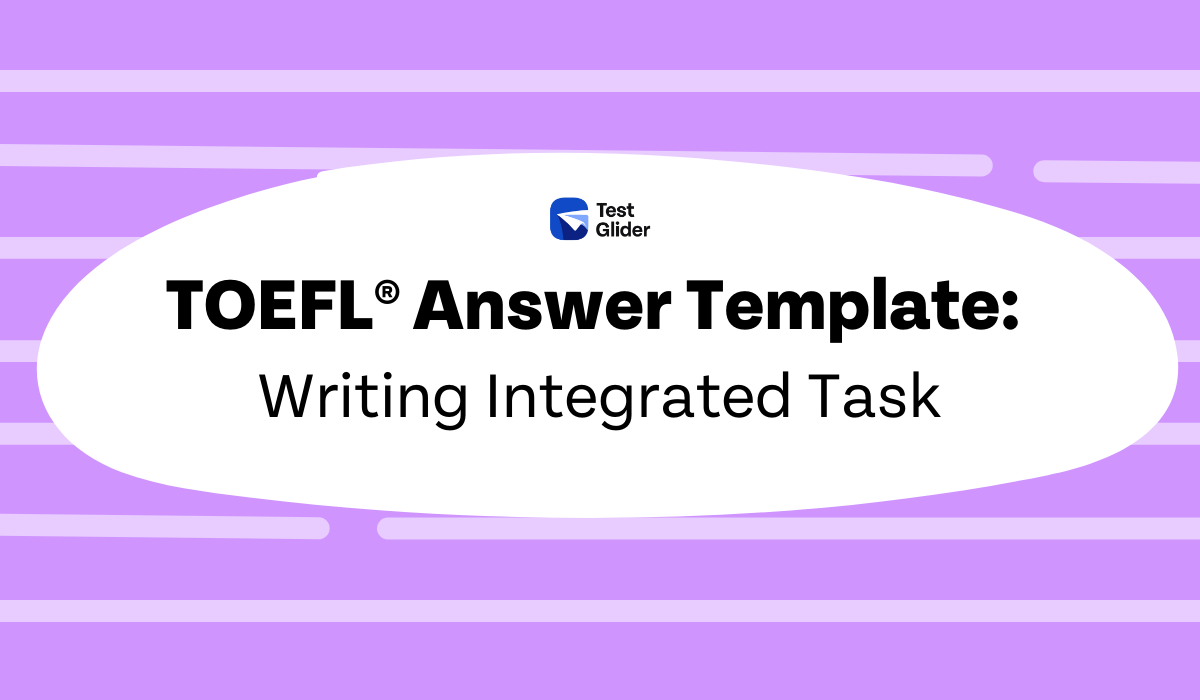
The writing section is the final section of the TOEFL test. It has 2 different question types, and you get one question from each question type in your test. You only get 20 minutes for question 1 and 30 minutes for question 2 , so it can be difficult at first to come up with a high-scoring essay within such a short time. To help you with that, here are the structure templates that can help you write a high-scoring TOEFL Integrated essay.
This blog post is a part of a series where I post templates for all TOEFL Speaking and Writing questions. As a part of this series, I will introduce you to structure templates for 4 speaking and 2 writing tasks, along with model answers written based on those templates.
This is the second post: How to write a TOEFL integrated essay.
I will include the reading passage and the lecture script just so you have an idea of what the topic is about when I am explaining the structure using the model essay.
Table of Contents
TOEFL Writing Integrated Reading Passage
Despite the worldly fame of William Shakespeare’s literary works, little is known about his life. Most of the facts we know are simply theories and rumors. The lack of specific records created many doubts about Shakespeare’s existence. Some have been arguing that there were other people who actually wrote the works under Shakespeare’s name. The first candidate is Francis Bacon, who was a famous scientist, theorist, and philosopher in the 16th century. This theory gained support because of the legal references indicated in Shakespeare’s plays and poems. For example, some of Shakespeare’s poems such as “Venus and Adonis” and “The Rape of Lucrece” imply legal ideas that Francis Bacon was known to support. The second candidate is Christopher Marlowe, who was a playwright and poet that lived in the same period as Shakespeare. Marlowe’s death is thought to be linked to the birth of the Shakespeare name. Some people believe that his death was faked to allow him to escape religious trials. He is then thought to have used the name of William Shakespeare to continue writing. The third candidate is Edward de Vere, an English nobleman who worked as a courtier in the 16th century. Back then, the writings of the authors that were from the noble class were restricted to a private audience. Edward de Vere was also one of those authors. Since he wasn’t able to take credit for his writing publically, many claim that Edward de Vere used a false name, William Shakespeare, to reach a broader audience. This enabled him to receive the spotlight and create famous masterpieces.
Although there is no clear historical evidence that proves William Shakespeare’s existence, the theories in the reading about the identity behind the Shakespeare name are full of errors. First of all, even though Francis Bacon and Shakespeare shared similar legal ideas, Francis Bacon’s academic background contradicts some of the scientific ideas in Shakespeare’s works. For instance, certain parts in Shakespeare’s canon and plays show a misunderstanding of the mainstream scientific beliefs of the time that Francis Bacon would not have had. Especially about astronomy beliefs, we can know that the ideas of these two figures don’t match. Next, Christopher Marlowe’s death has nothing to do with Shakespeare. All the plays Marlowe wrote were published under his own name after his death in 1593, which was very unlikely to happen for a person who was regarded as a religious criminal. Meanwhile, 37 other plays and 154 sonnets were published under the name of William Shakespeare. This theory doesn’t make sense because there was no reason for Marlowe to use a different name. And lastly, Edward de Vere couldn’t have used the name of Shakespeare because he died before the time some of Shakespeare’s works were newly published. Evidence clearly shows that many of Shakespeare’s plays and poems such as Macbeth, King Lear, and Tempest were written and revised in 1621, which is long after Edward de Vere died in 1604. Even if someone else had given the works to the publishers instead, revising them would have been quite impossible because no one would know what kind of stories Shakespeare wanted to publish.
Model Answer:
Both the reading passage and the lecture discuss three theories regarding the real identity of William Shakespeare. The reading passage mentions three people who could have used the name William Shakespeare as an alias, while the lecture contradicts the reading passage on all three points. First, the reading passage talks about the possibility of Francis Bacon being the person behind the name of Shakespeare. This theory is based on the idea that the legal references that appear in Shakespeare’s works are also known to be supported by Bacon. However, the lecture refutes this claim by stating that although the two people shared the same legal ideas, Shakespeare’s works also included scientific ideas that would not be supported by Bacon. Bacon’s academic background would contradict such ideas. Since Shakespeare’s works did not follow the mainstream scientific beliefs, his ideas on astronomy significantly differed from Bacon’s. Second, the reading passage suggests Christopher Marlowe as the second candidate. According to the passage, Marlowe faked his death to escape from religious trials and used the name of Shakespeare to publish his work. The lecture refutes this by asserting that Marlowe’s death had nothing to do with Shakespeare. Since some of Marlowe’s works were published under his own name after his death, it does not make sense for Marlow to also use a different name. The final theory in the reading is about Edward de Vere, an English nobleman who might have used the name of Shakespeare to receive credit publically. The lecture opposes this theory as well by stating that de Vere could not have used the name of Shakespeare since he died before some of Shakespeare’s works were revised and published. Even if someone else had given the works to a publisher, there is no way that the publisher would have known how to revise the work. In conclusion, while the reading passage introduces three different candidates who might have used the name of William Shakespeare, the lecture refutes all of the theories.
Before moving on to individual paragraphs, you should be aware of the general structure of TOEFL integrated essays. Your essay should include an introduction, 3 body paragraphs(one for each point), and a conclusion(optional). Since you need to show that you understood the connection between the reading passage and the lecture, each body paragraph should include one point from the reading and the related point from the lecture.

Now let’s take a look at how each paragraph is structured, starting with the introduction paragraph.

Main Topic: In this part, you explain the topic that is being discussed in both the reading passage and the lecture. This shows that you understood what the reading passage and the lecture were talking about.
Link between the reading passage and the lecture : This is where you explain the connection between the two sources. Most of the time, the lecture goes against whatever the reading says, so keep that in mind.
Moving on to the body paragraphs:

Transition Word: Make sure you start your body paragraphs with appropriate transition words. This makes your essay look coherent and easy to read. You can also include transitions between your explanation of the reading passage and the lecture.
Reading Passage: This part is where you paraphrase the information you got from the reading passage. Make sure you do not copy the sentences word by word from the reading passage. You should always rephrase the sentences in your own words because copying them will lead to point deductions. Also, notice how in all 3 body paragraphs, the explanation of the reading passage is 2 sentences or less? Some students tend to include a lot of details from the reading passage because they can always read the passage while writing the essay. However, your explanation of the lecture should be longer and more detailed than your explanation of the reading passage. This means you should not waste your time trying to explain ALL the details mentioned in the reading passage. Use the passage as a guide to help you organize the key points in case you miss anything while trying to take notes for the lecture part.
Lecture: This is the most important part of your body paragraph. In order to get this part right, you need to have solid note-taking skills. So assuming you have taken good notes, the lecture part should be fairly easy to write. Just connect the information that you noted down to the information you got from the reading passage. Make sure you include appropriate details to support the key points mentioned in the lecture. And always keep in mind that you should try to include more information about the lecture than the passage.
Here is an example of a note-taking table that you can use to match key points from the two sources.

Last is the conclusion paragraph:
In conclusion, while the reading passage introduces three different candidates who might have used the name of William Shakespeare, the lecture refutes all of the theories.
In TOEFL integrated essays, the conclusion paragraph is totally optional. If you have enough time left, go ahead, but if you do not have enough time, focus on the body paragraphs and skip the conclusion. If you do write one, your conclusion should restate the information in the introduction paragraph. Here, the author rephrases the “Link between the reading passage and the lecture” part.
The final structure of your integrated essay should look like this:

This concludes today’s post. Please look forward to upcoming posts on the speaking section!
➡️ Practice with TestGlider Mock Tests
- TOEFL Writing Correction Topics
- OET Course & Mock Test
- Writing Correction
- Speaking Mock Test
- Reading Course
- Listening Practice Tests
- FREE Practice Tests
- OET Writing Correction
- OET Reading Course
- OET Speaking Mock Test
- TOEFL Writing Correction
- PTE Writing Correction
- OET Listening Practice Tests
- OET (Occupational English Test)
- PTE (Pearson Test of English)
Guide to Getting a Better TOEFL Integrated Writing Score

In order to improve your TOEFL Integrated Writing score , it is vital that you understand what the Integrated Writing task entails. This task in the Writing Section is unlike any other task on the TOEFL , and many students get low marks on this task simply because they don’t understand how to tackle it. So first…
What is the TOEFL Integrated Writing Task? The TOEFL Integrated Writing Task is one of two essays that you will have to write (approximately 200 – 250 words) on the TOEFL Writing Section . The essay is based on two passages, a reading passage and a listening passage. You are NOT supposed to give your opinion in this writing task .
The first passage you get on the Integrated Writing Task is the reading passage which is around 250 – 300 words. You get 3 minutes to read the passage. The author of the reading passage will discuss a particular topic, and then provide 3 main points, each lined out in a paragraph, that gives more details or supporting information on the topic.
For example, the author could be discussing this topic: origins of an ancient tribe. Then in the following 3 paragraphs, the author is going to make 3 main points about this topic. Maybe these points explain why a common theory about the tribe’s origins is right or wrong. Or maybe the main points are pieces of evidence that support the author’s theory about their origin. It is critical that you are able to identify and paraphrase the topic and author’s 3 main points in your essay.
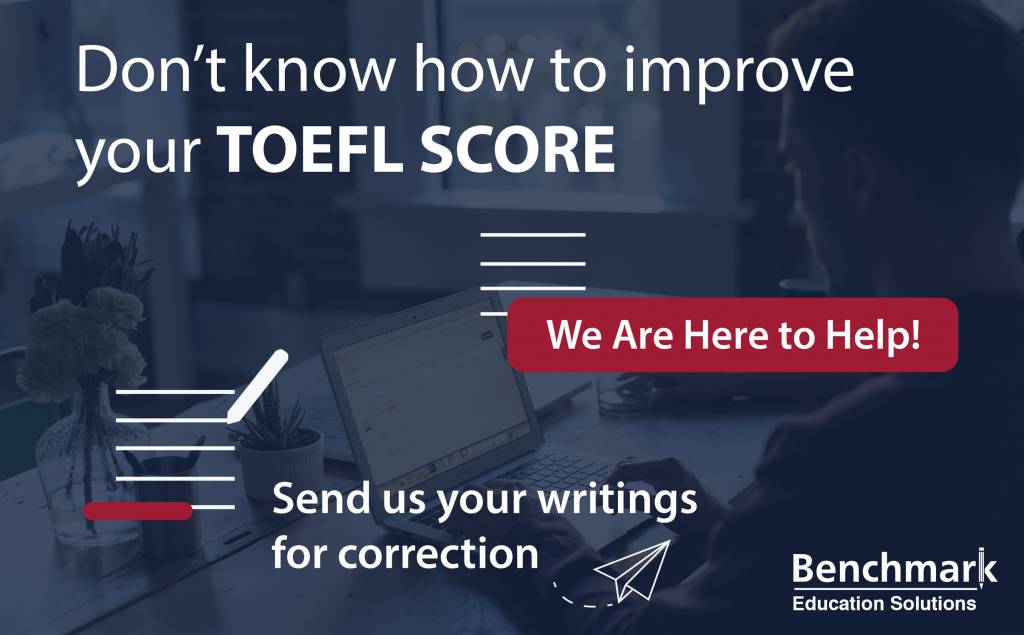
Next comes the more difficult part, the listening passage. After having 3 minutes to read the passage (and take notes!) then you have to listen to a lecture for 2 to 3 minutes. The lecturer is always going to talk about the same topic as the author. The lecturer will also provide 3 main points about the topic.
The lecturer is almost always at odds or in disagreement with the author. Therefore, the main points in the listening will follow the order of the 3 main points from the reading . Usually the lecturer will explain why the author is wrong about his or her theory, or how there is other evidence that does not support the author’s ideas about the given topic. It is also critical that you are able to identify and paraphrase the lecturer’s 3 main points AND how they contradict or disprove the author’s main points in your essay.
Finally, the reading passage will reappear, and you are given the remaining 20 minutes to outline, write and edit your Integrated Writing essay answer.
How to structure your TOEFL Integrated Writing Task Essay? The best advice is to go into the TOEFL exam knowing how you will structure your Integrated Writing essay . This will save you valuable time, because some of your answer can actually be prepared beforehand. This is known as a template. Below is an example of a template you should emulate on the TOEFL exam:
The reading passage is about ( insert topic ). The author believes ( insert author’s opinion on the topic ), but the lecturer in the listening passage disagrees. He/She feels ( insert lecturer’s opinion on the topic ). The author provides three main points to support their opinion, and the lecturer provides three contradictory points. First, the author says that ( author’s first main point ). However, the lecturer explains ( lecturer’s first main counterpoint ). The lecturer goes on to state that ( supporting details that link back to the reading ).
Next, in the reading passage, the author claims that ( author’s second main point ). To the contrary, the lecturer provides ( lecturer’s second main counterpoint ). Furthermore, the lecturer also mentions ( supporting details that link back to the reading ).
Finally, the author in the reading states ( author’s third main point ). In contrast, the lecturer in the listening passage is of the opinion that ( lecturer’s third main counterpoint ). Additionally, he/she points out that ( supporting details that link back to the reading ).
2. Mistake #2 – Failing to Clarify the Relationship Between the Two Passages Another common mistake TOEFL test takers make on the exam is that they don’t write about how the listening passage connects to the reading. As mentioned, the lecturer is typically critical or in downright disagreement with the author. It is important to not only state what the main points of each passage are, but also explain how the listening passage attacks the claims in the reading. Imagine answering these questions: What specific details does the lecturer give to debunk the author’s position? How does the evidence in the listening disprove the theory in the reading? Therefore, to avoid this common error, include some supporting details or reasons for each counterpoint from the listening passage that relates to the author’s main point.
3. Mistake #3 – Grammatical Errors Another wrong turn test takers make on the Integrated Writing is that they have silly grammatical or spelling mistakes. The best solution for this problem is better time management and use Writing Correction Service in order to improve their mistakes well in advance. There is a lot of information and not a lot of time on this writing task. Therefore, don’t spend a lot of time writing an introduction or a conclusion. Quickly introduce the topic of both the passages and get straight into the main points of the author and lecturer as soon as possible. You also don’t technically need a conclusion, but if you do choose the right one, make it only one or two short sentences. Finally, be sure to save at least 2 minutes at the end to go back and edit your essay. Students unnecessarily lose points for spelling and grammar mistakes because they don’t give themselves time to proofread their essays.
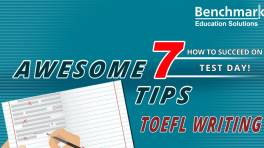
Leave a Reply Cancel reply
Your email address will not be published. Required fields are marked *
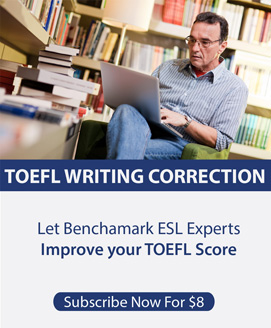
- TOEFL Writing
- TOEFL Integrated Writing
- TOEFL Independent Writing
- TOEFL Writing Practice
- TOEFL SAMPLE ESSAYS
- TOEFL Reading
- TOEFL Speaking
- TOEFL Listening
- TOEFL Grammar
Note-Taking and Organizing Your Answer in TOEFL Integrated Writing
The TOEFL Integrated Writing Task can be tricky. The passage and the lecture are both fairly complex, and they contradict each other .
There’s a lot of important information to be found between the reading and the lecture that challenges parts of the reading. You need to make sure you notice, record, and correctly recall the key points. The trick here is to know what to expect in the reading and what to listen for in the lecture that comes after it.
Reading passages in the Integrated Writing Task always have three main points. In turn, the lecturer you listen to will always challenge those three main points with three counterpoints. Be sure to mentally note the three main assertions in the passage—and perhaps write them down in the form of very short, simple phrases. (Heavy note-taking on reading can distract you and slow you down, so keep any reading notes as brief as possible.)

Once you’ve identified the three main ideas in the reading, you’ll be very prepared to listen to the lecture. You’ll know what to listen for—points the professor makes that are directly connected to the main ideas from the passage. Only take notes on points from the lecture that are directly comparable to the reading. The professor may also say a few things that don’t directly connect to the reading passage—these are things you can ignore.
Stay focused throughout the task. Understand that TOEFL Integrated Writing focuses on how the lecture challenges points in the reading, not on the ways in which the professor may agree with the author.
So mentioning agreements is less essential to the task… but it can be useful. Including the instructor’s occasional agreements with the author (if there are any) can give a more complete picture of how and why the professor is challenging the author’s points.
But again, mentioning the agreements is not the most essential part of the task. Unless you add this kind of extra information carefully, you risk running out of time or creating a disorganized, unfocused essay. Mention the times the professor agrees with the passage only if you feel you have the time and skill to incorporate these extra ideas into your essay successfully.

David is a Test Prep Expert for Magoosh TOEFL and IELTS. Additionally, he’s helped students with TOEIC, PET, FCE, BULATS, Eiken, SAT, ACT, GRE, and GMAT. David has a BS from the University of Wisconsin-Eau Claire and an MA from the University of Wisconsin-River Falls. His work at Magoosh has been cited in many scholarly articles , his Master’s Thesis is featured on the Reading with Pictures website, and he’s presented at the WITESOL (link to PDF) and NAFSA conferences. David has taught K-12 ESL in South Korea as well as undergraduate English and MBA-level business English at American universities. He has also trained English teachers in America, Italy, and Peru. Come join David and the Magoosh team on Youtube , Facebook , and Instagram , or connect with him via LinkedIn !
View all posts
More from Magoosh

4 responses to “Note-Taking and Organizing Your Answer in TOEFL Integrated Writing”
Is there any form of a perfect writing answer on which we can build our practices?
That’s a really great question, Kamal. The answer to this is yes… and no.
Yes, there are examples of perfect and near-perfect answer templates, and you can use key phrases and other structural features from these templates in your own answers. Magoosh offers a helpful set of TOEFL Writing templates here .
But in a way there is no one perfect writing answer. There are a lot of tips and tricks for writing a good TOEFL response, but every student has a different style and makes different decisions. And while templates can be helpful, it’s certainly possible to write a top-scoring TOEFL essay without using any of our templates.
I keep scoring 22 in my writing section. Till today I don’t know what am doing wrong. I did read your notes besides other notes. However, I still Don’t know what am missing to keep scoring 22! I only need 24 to pass. I already passed my total score that required by the board of pharmacy. But keep repeating TOEFL just because of the writing section.
I’m sorry you’ve been having such frustrating experiences with the TOEFL Writing Section, Lana! 🙁 Many factors contribute to your TOEFL Writing Score. To get a feel for why you might be getting a 22, carefully read the official TOEFL Writing Rubrics. (If you haven’t done so already.)
When your TOEFL Writing score gets “stuck” in this way, it also may be worth our while to do a few tutoring sessions with a real TOEFL tutor. This doesn’t necessarily cost a fortune. There are many sources for affordable TOEFL tutoring online , and offline too. And for free help from real human beings, you may also want to share some of your practice TOEFL essays on some TOEFL Forums .
Leave a Reply Cancel reply
Your email address will not be published. Required fields are marked *
- The Writing Process
- Addressing the Prompt
- Writing Skill: Development
- Originality
- Timed Writing (Expectations)
- Integrated Writing (Writing Process)
- Introduction to Academic Essays
- Organization
- Introduction Paragraphs
- Body Paragraphs
- Conclusion Paragraphs
- Example Essay 1
- Example Essay 2
- Timed Writing (The Prompt)
Integrated Writing (TOEFL Task 1)
- Process Essays
- Process Essay Example 1
- Process Essay Example 2
- Writing Skill: Unity
- Revise A Process Essay
- Timed Writing (Choose a Position)
- Integrated Writing (TOEFL Task 2)
- Comparison Essays
- Comparison Essay Example 1
- Comparison Essay Example 2
- Writing Skill: Cohesion
- Revise A Comparison Essay
- Timed Writing (Plans & Problems)
- Integrated Writing (Word Choice)
- Problem/Solution Essays
- Problem/Solution Essay Example 1
- Problem/Solution Example Essay 2
- Writing Skill: Summary
- Revise A Problem/Solution Essay
- Timed Writing (Revising)
- Integrated Writing (Summary)
- More Writing Skills
- Punctuation
- Simple Sentences
- Compound Sentences
- Complex Sentences Part 1
- Complex Sentences Part 2
- Using Academic Vocabulary
- Translations
Choose a Sign-in Option
Tools and Settings
Questions and Tasks
Citation and Embed Code

Sharing ideas that you learn from reading or listening is an important part of writing. Because it is an important part of college writing, it is a task included on the TOEFL. The first writing task in the TOEFL has very specific requirements. This chapter will explain how to be successful in this type of integrated writing.
The TOEFL integrated writing task is not a true essay like you practice in other parts of this textbook. There is not a full introduction. There is no conclusion. There is no place for your own personal feelings and opinions on the topic. You thesis statement is not creative. You don't need 5 paragraphs with 5 sentences each.
Task format
You will have three minutes to read a few short pargraphs from a textbook. You should take notes about the major details that the author explains. Your notes do not need to be very detailed because you can see the reading again when you start writing. The textbook will usually:
- Introduce the main idea
- Give support for the main idea with three major details
Next, you will listen to part of a lecture. The professor who give the lecture will talk about the same topic as the reading. There are two usual organizations for the lecture:
- The professor disagrees with the textbook and explains why the three points are wrong
- The professor agrees with the textbook and adds more detail to the three points
The order of the major details will be the same in the reading and lecture.
You need to take good notes during the listening. You can only listen one time.
You will have 20 minutes to write your response to the question. You will focus your answer on the lecture and explain how it connects to the textbook. Include all three of the major details.
Example: TOEFL Writing Prompt 1
The TOEFL Writing Task 1 will always ask you to summarize the lecture and compare it to the reading passage.
Prompt: Summarize the points made in the lecture, being sure to explain how they challenge specific arguments made in the reading passage.
Response format
This question asks for a summary. The easiest organization is to have 4 paragraphs. The first paragraph will explain the relationship between the reading and the listening (e.g., do they agree about the topic, or do they disagree?). The other three paragraphs will explain each major detail. You do not need a conclusion paragraph. An effective response will have approximately 200 words. Do NOT include your own opinion or any outside information.
You can get a high score on this section, if you write about the important points from the reading and listening in a clear and accurate way.
A T-Chart is a good way to organize your notes. On the left, you will write the three major details from the reading. The professor will talk about the same ideas in the same order. The T-Chart helps you know what to expect when you take notes.
This is a sample T-Chart that could be used to show the points made in the example task.
TOEFL Integrated Writing Tips
Every student will feel ready to take the TOEFL at a different time. Here are some strategies to help you prepare when you are ready.
- The prompt does not really change. The topic will be different, but you will always be comparing the reading with the listening.
- You can see the reading when you write. Only take simple notes of the major details to make it easier to listen for how the professor agrees or disagrees with that point.
- Take careful notes during the listening.
- Paragraph 1 What do the reading and lecture discuss?
- Paragraph 2 What is the speaker's first point? How does it connect to the reading?
- Paragraph 3 What is the speaker's second point? How does it connect to the reading?
- Paragraph 4 What is the speaker's third point? How does it connect to the reading?
- Look at your notes again. Did you explain the ideas from both the reading and the listening?
- Before the test, look at feedback your writing teacher gives you about your writing. Go to your writing teacher's office hours to get advice.
- You should also look at feedback your grammar teacher gives you about your writing. Go to your grammar teacher's office hours to get advice.
Exercise 1: TOEFL Writing Task 1
1. Read the passage.
2. Listen to the lecture.
3. Summarize the points made in the lecture, being sure to explain how they challenge specific arguments made in the reading passage.
Teachers have access to the "Career Planning" Integrated Writing files on the ELC Curriculum Portfolio.
This content is provided to you freely by BYU Open Learning Network.
Access it online or download it at https://open.byu.edu/academic_a_writing/integrated_writing_2 .

TOEFL Prep Online Guides and Tips
How to ace the toefl writing section: 7 expert tips.
Want to know all the information you need to write two great essays and ace the TOEFL Writing section?
This guide has all the tips you need to do well on TOEFL Writing. We’ll explain exactly what you can expect to see in this section, then give TOEFL Writing tips tips on how to answer both essay types, how you should study, and what you should do on test day to make sure you ace this section.
Overview of the TOEFL Writing Section
The TOEFL Writing section lasts 50 minutes and contains two tasks: Integrated Writing and Independent Writing. It’s the final section of the TOEFL. After this, you’re done!
You’ll have 20 minutes to plan and write the Integrated Writing Task and 30 minutes to plan and write the Independent Writing Tasks. Both essays will be written on the computer. We’ll discuss the tasks and what you’re expected to write in more detail in the next section.
After you complete the exam, your essays will be graded by several (typically four) graders. Each essay will receive a score from 0-5. The sum of those two scores will then be scaled to a score from 0-30, which is your official Writing score. The Writing section makes of 25% of your total TOEFL score (from 0-120).
What Types of Questions Are on TOEFL Writing?
The Writing section contains two tasks. In this section, we’ll explain the format and content of the tasks and give an official example question and response tips for each question type.
By the way: we have built the world's best online TOEFL course . Get online practice (TPO-sytle!) and individual grading and feedback on Speaking and Writing.
Learn how you can improve your TOEFL score by 15 points today .
TOEFL Integrated Writing
The TOEFL Integrated Writing task requires you to use listening, reading, and writing skills. For this task, you will have three minutes to read a short passage, then you will listen to a short (approximately two-minute long) audio clip of a speaker discussing the same topic the written passage covers. You will have 20 minutes to plan and write a response that references both of these sources. You won’t discuss your own opinion.
During the writing time, you’ll be able to look at the written passage again, but you won’t be able to re-hear the audio clip. You’ll be able to take notes while you listen to it though. The suggested response length for this task is 150-225 words. You’ll be graded on the quality of your writing as well as how well your response represents the main points of the audio clip and written passage and how they relate to each other.
Sample TOEFL Integrated Writing Question
(On the real TOEFL, the lecture would be an audio clip instead of a transcript.)
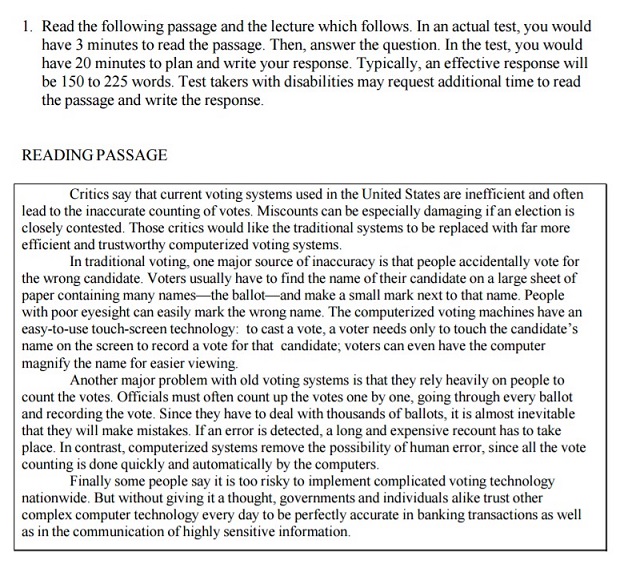
TOEFL Writing Tips for Answering
- Frequently refer back to the audio clip and written passage when making an argument. A key part of your grade is how well you show you understood the information these two pieces contained.
- However, don’t just copy portions of the audio clip or passage into your essay; that doesn’t show your English skills. Always rewrite the main ideas in your own words.
- When answering this question, pay careful attention to any differences between the information in written passage and the information in the audio clip. These differences are often an important part of your response.
- Take good notes when the audio clip is playing. You won’t have an opportunity to listen to it again.
- Don’t inject your own opinion. Only discuss what the audio clip and passage are saying. You’ll only discuss your own opinion on the Independent Writing Task.

TOEFL Independent Writing
For the Independent Writing task, you’ll receive a question on a particular topic or issue. You’ll have 30 minutes to plan and write a response to that topic that explains your opinion on it. You’ll need to give reasons that support your decision.
It’s recommended that your response to this task be at least 300 words, and you’ll be graded on how well you develop your ideas, how well your essay is organized, and how accurately you use English to express your ideas.
Sample TOEFL Independent Writing Question
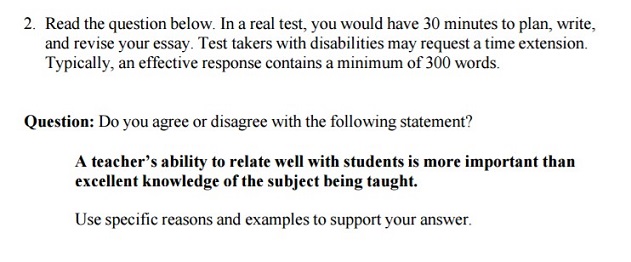
- Don’t be afraid to make things up. This essay is all about creating a strong argument for your opinion on a topic. If you don’t really care about the topic you’re supposed to write about, choose whichever side you can write a stronger essay for, and act like that’s your opinion.
- Make your opinion clear within the first paragraph of your essay. There should be no doubt as to how you feel about the topic.
- Longer isn’t always better. The minimum recommended length for this essay is 300 words. If you have spare time and points you still want to make, keep writing, but don’t feel like your essay needs to be 600 words. Aim for your essay to be at least 300 words, but if it’s only, say, 320 words, it’s still possible for it to get a top score if you’ve written it well.
TOEFL Writing Study Strategies
You should absolutely study the TOEFL Writing section and do practice essays before exam day. Below are some tips to help you get the most out of your studying.
Study Strategy 1: Study the 2 Essay Types
The two essays you need to write for this section are more different than they may appear at first glance, and it’s important to be aware of those differences to understand how to get top scores for both essays.
For the Integrated essay, you should not give your own opinion on the topic, and you’ll need to refer to specific points in the audio and written passages to back up your claims. For the Independent essay, you will have to give your own opinion, along with specifics to back it up.
Completing practice essays will help you become more familiar with what the prompts will look like (see next section), and you should also look at the rubrics TOEFL graders will use when grading your essays so you get a better understanding of what you need for a high score.
Study Strategy 2: Take TOEFL Writing Practice Essays
Any writing you do in English can help strengthen your skills and help you do better on TOEFL Writing, but it’s especially important to take practice TOEFL essays. Completing practice essays will help you become more familiar with the different essay prompts, strengthen your writing skills, and learn how to manage your time when writing essays.
We have a guide to all the best TOEFL Writing practice resources, including numerous free and official practice essays. Check it out to get some great study materials for the Writing section.
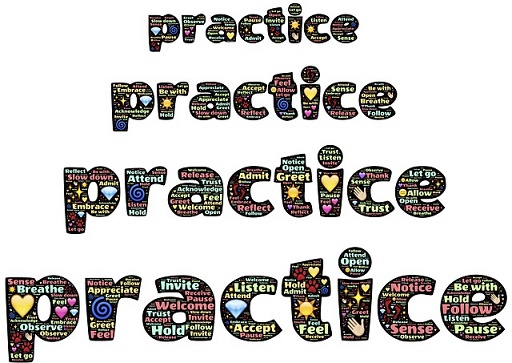
Study Strategy 3: Time Yourself When Writing Practice Essays
When you’re doing practice essays, you should also be sure to time yourself. Give yourself 20 minutes to plan and write an Integrated Writing essay and 30 minutes to write an Independent Writing essay.
Timing yourself when you write will help you be more prepared for test day since you’ll get practice planning and writing essays within a limited time frame. When you first start writing your practice essays, it can be easy to spend too much time preparing which will cause you to run out of time before you finish writing. Completing timed practice essays will help you avoid this.
You should also count how many words your essays contain after you’ve finished writing them. Integrated Tasks should be 150-225 words and Independent Tasks should be at least 300 words.
Study Strategy 4: Review Your TOEFL Writing Practice Essays
After you write each practice essay, you should also review it and think about how well it answered the question. This is easier to do if the practice question comes with sample answers that you can compare your answer to, but you should do this step for all practice essays you write, even if they don’t come with any answer explanation. You can also assign your essays a score or have a tutor or friend who’s also studying for the TOEFL score your essay.
It’s tempting to take a break from TOEFL studying as soon as you’ve finished your essays, but it’s important to do this step because it will get you thinking about what great essays look like and how yours can be improved.
TOEFL Writing Tips for Acing the Section on Test Day
The last step in acing TOEFL Writing is having a great exam day. Follow these TOEFL writing tips to help ensure everything goes smoothly while you’re completing the Writing section.
Test Tip 1: Take a Few Minutes to Plan Your Essays
Since you only have a limited amount of time to complete your essays, it can be tempting to start writing the second your time starts. You want to avoid doing this, however. Spending just a few minutes planning your essay can help keep your writing focused and on topic, and it can often help you write faster because you know what you’ll be discussing next.
Spend a max of two to three minutes writing a basic outline for your essay. It should include:
- Your thesis statement (the main point you’re making and will discuss throughout the essay)
- The main point of each paragraph you’ll have in your essay
- Any specific examples you can quickly think of (either from the included passages or your own opinion, depending on the essay) to back up your claim
Before you begin writing, reread the essay prompt again to make sure your outline answers the question well (see next section for more details).
Test Tip 2: Keep Referring Back to the Question
Even if you craft a beautiful essay with perfect English, you won’t get a good score if you don’t answer the question properly. It can be easy to go off on a tangent or begin to discuss something other than what the question is asking.
For example, the Independent Writing sample question above asks you to explain whether it’s more important for teachers to relate well to students or have excellent knowledge of the subject they’re teaching. In your essay, you might include an example of a great teacher you had and spent the majority of the essay explaining why that teacher was your favorite. Even if your writing is flawless, you wouldn’t get a good score because you’re not discussing the question the essay prompt is asking.
This is something practice and making an outline before you begin writing can help you avoid, so be sure to do both, and remember to reread the prompt as you write your essay to make sure you’re on track.

Test Tip 3: Leave Some Time to Review Your Essays
After you’ve finished writing your essay, it’s helpful if you can spend a little bit of time looking it over. Even setting aside 60 seconds can give you enough time for you skim your essay and catch and spelling or grammar errors or any sentences that aren’t clear. F ixing these little mistakes can help you from losing points when your essays are scored. Doing practice essays will help you get better at managing your time so it’ll become easier to finish your essays with some time to spare for reviewing.
Acing TOEFL Writing: What You Need to Know
In order to do well on the TOEFL Writing section, it’s important to first learn exactly what types of essays you’ll be expected to write, what they should include, and how you’ll be graded on them. While you’re studying for this section, be sure to study the two essay types, take practice essays, time yourself when writing essays, and review your practice essays.
On exam day, during the Writing section you should outline your essays before you begin writing, refer back to the essay prompts regularly, and leave yourself a bit of time at the end to review what you’ve written. Keep these TOEFL Writing tips in mind, and you’ll be well on your way to writing great essays. And remember, this is the last section of the TOEFL. Once you finish the Writing section, you’re done!
What’s Next?
Not sure what TOEFL score you should be aiming for? Learn what a good TOEFL score is based on the schools you’re interested in.
Want more tips on how to prepare for TOEFL Writing questions? Check out our guide to the best ways to practice for TOEFL Writing!
Once you’ve taken the TOEFL, how do you send your scores to schools? Learn the six tips you need to know for sending your TOEFL Scores.
Ready to improve your TOEFL score by 15 points?
Author: Christine Sarikas
Christine graduated from Michigan State University with degrees in Environmental Biology and Geography and received her Master's from Duke University. In high school she scored in the 99th percentile on the SAT and was named a National Merit Finalist. She has taught English and biology in several countries. View all posts by Christine Sarikas
Comments are closed.
- UP Textbook Guide
- The Writing Process
- Addressing the Prompt
- Originality
- Timed Writing (Expectations)
- Integrated Writing (Writing Process)
- Shape and Organization
- A Shifting Structure
- Introductions
- Body Paragraphs
- Conclusions
- Reference Page
- Example Essay
- Timed Writing (Revising)
Integrated Writing (TOEFL Task 1)
- Descriptive Writing
- Alternative Project: Creative Writing
- Example Descriptive Writing
- Skill: Word Choice
- Sources: Quoting
- Revise Descriptive Writing
- Timed Writing (Word Choice)
- Integrated Writing (TOEFL 2)
- Personal Statements
- Alternative Project: Formal Emails
- Example Personal Statement
- Types of Personal Statements
- Organization for Comprehensive Personal Statement
- Organization for Prompted Personal Statement
- Skill: Development
- Revise a Personal Statement
- Timed Writing (Audience & Register)
- Integrated Writing (Audience & Register)
- Cause-Effect Writing
- Example Cause-Effect Writing
- Skill: Unity
- Sources: Summarizing
- Revise Cause-Effect Writing
- Timed Writing (The Prompt)
- Integrated Writing (Paraphrasing)
- Alternative Project: Reviews
- Persuasive Essays
- Alternative Project: Reflections
- Example Persuasive Writing
- Skill: Cohesion
- Sources: Paraphrasing
- Revise a Persuasive Essay
- Timed Writing (Scope & Scale)
- Integrated Writing (Content)
- Appendix A: Sentence Variety
- Simple Sentences
- Compound Sentences
- Complex Sentences Part 1
- Complex Sentences Part 2
- Compound-Complex Sentences
- Appendix B: Using Sources
- Finding Sources
- In-text Citations
- More about Reference Pages
- Translations
Choose a Sign-in Option
Tools and Settings
Questions and Tasks
Citation and Embed Code

In the first integrated writing practice, you learned that integrated writing is a common task at the college level. Because incorporating ideas from outside sources through summary and synthesis is so important, it is a task included on the TOEFL. This section of the integrated writing practice focuses on the unique differences between a normal integrated writing task and the very controlled version you will encounter on the TOEFL.
It is important to first note that the TOEFL integrated writing task is not a true essay as you have likely learned to create. There is no introduction. There is no conclusion. There is no room for your own personal reactions and opinions on the topic. You do not write a thesis statement. You don't need 5 paragraphs with 5 sentences each.
The TOEFL integrated writing structure is very prescribed, and the content is provided directly. The integrated writing task requires you to summarize and compare academic information.
Task format
You will have three minutes to read a passage about an academic topic. You should take notes about the main points that the author makes, but you do not need to write a lot because you will be able to see the reading again when it is time to write.
Then you will listen to a piece of an academic lecture that addresses the same topic that you read about. The professor that is speaking may have the same opinion as the author of the article you read, but the professor often has an opposing point of view. You need to take good notes during the listening. You can only listen one time. Make sure you listen for the main points you found in the reading.
You will have 20 minutes to write your response to the question.
Read the question carefully and address all the parts of the question. For example, in this example question, the primary task is to summarize the points made in the lecture. Then you should explain how they relate to points in the reading. Always answer both parts of the question.
Example: TOEFL Writing Prompt 1
The TOEFL Writing Task 1 will always ask you to summarize the lecture and compare it to the reading passage.
Prompt: Summarize the points made in the lecture, being sure to explain how they challenge specific arguments made in the reading passage.
Response format
Your answer will not look like a traditional essay because this task is not an essay. This task is a summary and a comparison. In order to summarize the information they give you, you will typically need four paragraphs.
The first paragraph will state the relationship between the reading and the listening (e.g., do they agree about the topic, or do they disagree?). The other three paragraphs will each focus on a specific point that was addressed in both the reading and the listening. You do not need a conclusion paragraph. An effective response will have approximately 200 words.
Be careful in your response to not summarize both the reading and the lecture. You should typically focus on summarizing the lecture. You should not copy from the reading passage word-for-word.
*Because this is a summary, DO NOT include your own opinion or any outside information. This integrated writing task is not an opinion essay. The independent writing task is the opinion essay.
Many students find it helpful to organize their notes with a “T-Chart.” On one side of the T chart, write down the main points from the reading. On the other side of the T-Chart, write down the corresponding points found in the listening. Even though the reading passage reappears on your screen while you write, taking notes on the reading is important. If you can quickly refer to your notes instead of spending longer periods of time rereading the passage during the writing time, you will be able to spend more time writing.
It can also help you focus during the listening and give you something to listen for. Make sure you listen for the main points you found in the reading. The listening passage will probably address the same three points found in the paragraphs of the reading. They may even be in the same order. Take notes on the main ideas and key details. You do not need to write full sentences; phrases or words could be enough.
This is a sample T-Chart that could be used to show the points made in the example task.
Two Example Responses
Prompt: Summarize the points made in the lecture, being sure to explain how they challenge the points made in the reading passage.
Response 1:
Normally someone would think that when the word "eco is used" in a sentence such as "this bag is "eco-friendly" , the person might think that it is better to use eco-friendly materials or products because it is helping the environment. This way of thinking is not 100% accurate because the fact that has eco on their name, does not mean that everything related to the nature might be benefied out of using eco-friendly sources. It is true that eco-turism has a less strong impact in nature but there are still people that are corrupted that abuse their power, which means that even if an area is protected by the government does not mean that there are other people exploding their sources.
There is also a lot of other illegal practices such as hunting, cutting down trees, cultural pollution, etc.
Therefore, there is always something that we can learn about how to take better care of our surroundings, and not just trusting that everything that is eco makes it better in order to enjoy of the nature that we are lucky to have.
Response 2:
The reading and the lecture are both about eco tourism. The author states the advantages about that topic. On the other hand, the lecturer is presenting the negative consequences about eco tourism.
First, the author says that the eco tourism is positive for the environment. In contrast, the lecture claims that to have tourism in some area is required some infrastructure and that is not good for the environment. They can have air and water pollution.
According to the reading the eco tourism encourage conservation. The professor does not agree with that. She points that even a protected area can be explored. Illegal hunting and cutting trees is happening in places that are protected.
Further, the author believes that more jobs and better living conditions are provided by eco tourism. The lecturer opposes that idea saying that the local people has jobs with lower payments, and it also causes cultural pollution.
The first response is a low-mid response (about a 2) because it has some of the details, but is missing significant points made in the lecture. It is not very developed. More importantly, it misses the prompt. The student adds information and opinions outside of the sources which is not summarizing, and the student didn't compare the two sources.
The second response is a high-mid response (about a 4) because all of the main points are addressed, and the emphasis is on summarizing the listening and comparing it to the article, rather than summarizing every detail mentioned in both. The writer also does not include any outside information or opinions.
In order to receive a high score on this section, you need to answer the question by writing about the important points from the reading and listening in a clear and accurate way.
The sample task on the following pages contains a reading passage, a lecture transcript, and a response that would receive high marks.
Integrated Writing Tips
Because students take the TOEFL at various points in the semester, here is a list of strategies that are discussed at other points in this textbook. All of these strategies are things to keep in mind as you prepare. You may want to skim through the textbook ahead of the class schedule to learn more about these points in more detail.
- The prompt does not really change. The content will be different, but you will always be comparing two different perspectives.
- The reading will be visible when you write. Only take simple notes of the main points to make it easier to listen for the comparison point.
- Take careful notes during the listening.
- Paragraph 1 What do the reading and lecture discuss?
- Paragraph 2 What is the speaker's first point? How does it challenge the reading?
- Paragraph 3 What is the speaker's second point? How does it challenge the reading?
- Paragraph 4 What is the speaker's third point? How does it challenge the reading?
- Check your notes again. Did you accurately present the perspective of the lecture as it compares to the reading? Are all 3 main points included in your essay?
- Before the test, look at feedback your writing teacher has given you on your writing. Are there patterns of organization, development, coherence, or unity errors? Meet with your teacher during office hours before if possible to get tips for how to recognize and resolve those errors during the test.
- Also look at feedback your grammar teacher has given you on your accuracy errors. Are there patterns of errors with grammar structures that you can look for? Meet with your teacher during office hours before if possible to get tips for how to recognize and resolve those errors during the test.
Exercise 1: TOEFL Writing Task 1
- Read the passage.
- Listen to the lecture.
- Summarize the points made in the lecture, being sure to explain how they challenge specific arguments made in the reading passage.
Teachers have access to the "Research and Teaching Universities" Integrated Writing files on the ELC Curriculum Portfolio.
This content is provided to you freely by EdTech Books.
Access it online or download it at https://edtechbooks.org/up_writing_winter/integrated_writing_2 .

IMAGES
VIDEO
COMMENTS
Here's how the TOEFL Integrated Essay works: It is the first writing task on the TOEFL test. First, you will have three minutes to read an article (four paragraphs, 250 to 300 words) about an academic topic. Next, you will listen to a lecture (about 2 minutes) about the same topic. Finally, you will have 20 minutes to write an essay about the ...
This first task in TOEFL Writing really is all about note-taking, paraphrasing, and reporting. Read on to learn all about TOEFL Writing Task 1! The TOEFL Integrated Writing Task requires you to read a passage that is about 250-300 words long. You then must listen to a lecture that is 2 to 2.5 minutes long. The lecture will challenge or disagree ...
The TOEFL Integrated Writing task is the first of two Writing tasks. For this task, you must combine your reading, listening, and writing skills to produce a compelling essay that compares a passage with a lecture on the same topic. In order to get a high score on TOEFL Integrated Writing, try to practice with high-quality resources.
The TOEFL integrated writing task is the first of the two writing tasks in the TOEFL exam. It's designed to assess your ability to combine listening and reading skills to write a coherent and well-structured essay. Here's a detailed breakdown: Reading passage: A passage around 200-250 words long is provided.
What is TOEFL Writing Task 1? - TOEFL Integrated Writing Task . Integrated Writing TOEFL expects its candidates to use their reading, listening and writing skills to complete this task. In this, these candidates get three minutes to prepare for an essay by reading a short passage and listening to an audio clip relating to a single topic.
TOEFL iBT® Writing Practice Questions ... Writing Practice Set 1 (Integrated): Passage, Lecture, and Question Directions: Give yourself 3 minutes to read the passage. ... Development of your essay is judged by the amount and kinds of support (reasons, examples, details) that you present, and a well-developed essay will contain clearly ...
The TOEFL iBT test Writing section measures your ability to write in English in an academic setting, and to present your ideas in a clear, well-organized way. There are two writing tasks. Integrated writing task (20 minutes) — read a short passage and listen to a short lecture, then write in response to what you read and listened to.
Typically, an effective response will be 150 to 225 words. You may view the reading passage while you respond. Response time: 20 minutes. Question: Summarize the points made in the lecture, being sure to explain how they cast doubt on specific points made in the reading passage.
How to Write a TOEFL Integrated Essay. The writing section is the final section of the TOEFL test. It has 2 different question types, and you get one question from each question type in your test. You only get 20 minutes for question 1 and 30 minutes for question 2, so it can be difficult at first to come up with a high-scoring essay within ...
The TOEFL Integrated Writing Task is one of two essays that you will have to write (approximately 200 - 250 words) on the TOEFL Writing Section. The essay is based on two passages, a reading passage and a listening passage. You are NOT supposed to give your opinion in this writing task. The first passage you get on the Integrated Writing Task ...
It's my guide to the TOEFL integrated essay, updated for 2022. This video describes how ETS designs the question, provides a sample question and gives you a...
Below is an official TOEFL Integrated Writing sample question and as well as an essay response that received a score of 5. It includes a written passage, the transcript of a conversation (which would be an audio recording on the actual TOEFL, and the essay prompt. After the prompt is an example of a top-scoring essay.
Share. Table of Contents. Overview of Integrated Writing in TOEFL Writing. Tip 1 - In the TOEFL test, make sure you answer the question. Tip 2 - Organize your response for TOEFL Writing. Tip 3 - Check for language errors for a high TOEFL score. More help with TOEFL Writing. Start Now. It's Free ️.
TOEFL Writing Introduction. The writing section is the fourth section of the TOEFL iBT test and takes about 50 minutes to complete. It consists of two separate tasks: an Integrated Writing task and an Academic Discussion Writing task.The Independent task requires you to write an opinionated essay based on your own knowledge and experience, whereas the Integrated task requires you to write a ...
in. TOEFL Writing Task 1 (Integrated) For many students taking the TOEFL, scoring a 5 out of 5 on each of the two TOEFL essays—which would lead to a perfect score of 30 in the writing section—is the ultimate goal. Getting there takes a lot of practice, but it pays off nicely! Scoring so high in one section can counterbalance slightly lower ...
The TOEFL Integrated Writing Task can be tricky. The passage and the lecture are both fairly complex, ... And for free help from real human beings, you may also want to share some of your practice TOEFL essays on some TOEFL Forums. Reply. Leave a Reply Cancel reply. Your email address will not be published. Required fields are marked *
Exercise 1: TOEFL Writing Task 1. 1. Read the passage. 2. Listen to the lecture. 3. Summarize the points made in the lecture, being sure to explain how they challenge specific arguments made in the reading passage. Teachers have access to the "Career Planning" Integrated Writing files on the ELC Curriculum Portfolio.
The Writing section is the final section you'll face on the TOEFL, and it consists of two separate tasks: an Integrated Writing task and an Independent Writing task. The Integrated task requires you to write a response comparing a lecture and an article, whereas the Independent task requires you to write an opinionated essay in which you ...
After you complete the exam, your essays will be graded by several (typically four) graders. Each essay will receive a score from 0-5. The sum of those two scores will then be scaled to a score from 0-30, which is your official Writing score. The Writing section makes of 25% of your total TOEFL score (from 0-120).
Exercise 1: TOEFL Writing Task 1. Read the passage. Listen to the lecture. Summarize the points made in the lecture, being sure to explain how they challenge specific arguments made in the reading passage. Teachers have access to the "Research and Teaching Universities" Integrated Writing files on the ELC Curriculum Portfolio.